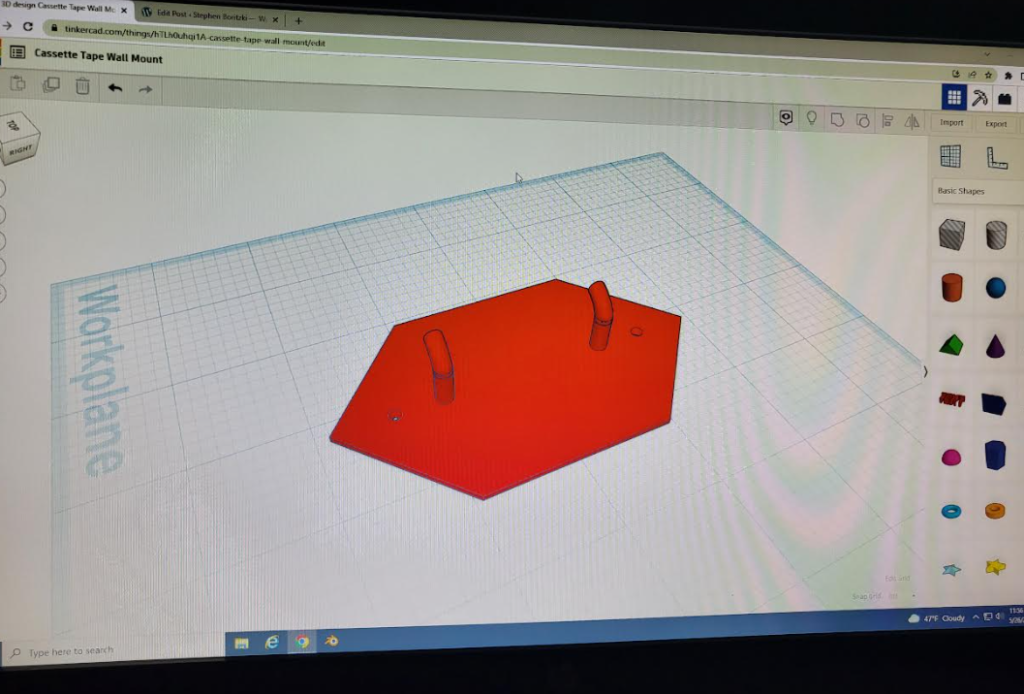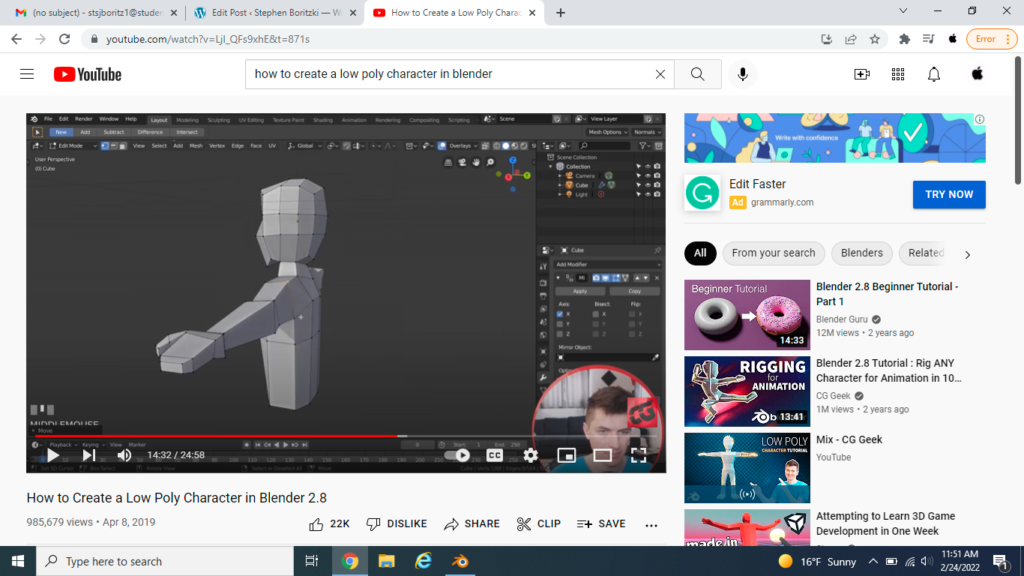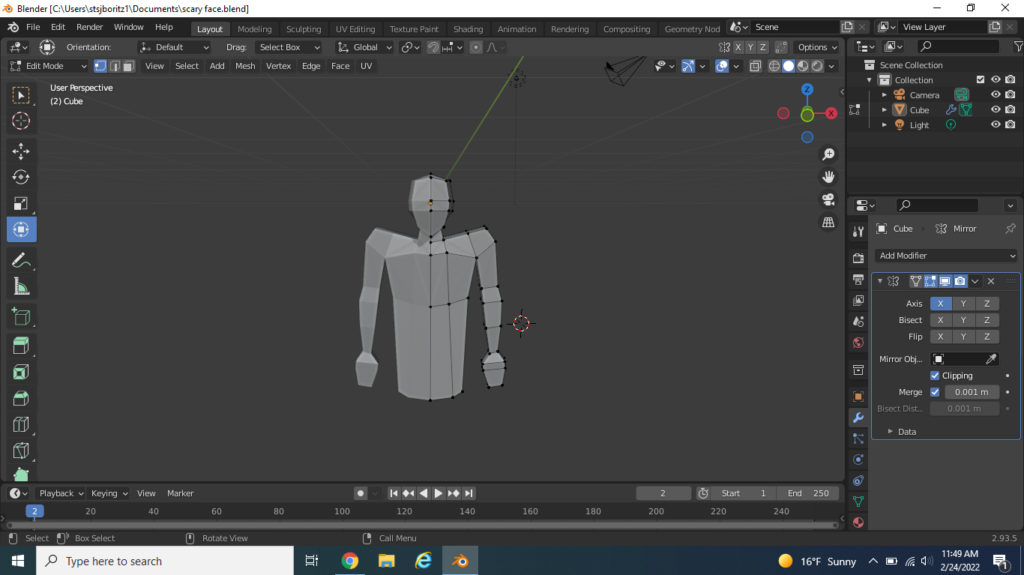For this project, I had decided to create a wall mount for a cassette tape. I first decided to get exact measurements, and then headed into Tinkercad, where I ruled out everything perfectly within the application. This is one of the first times I have ever gotten exact measurements for a project like this. Typically, I don’t need to get measurements, but I did this time, and it was the first thing I did.
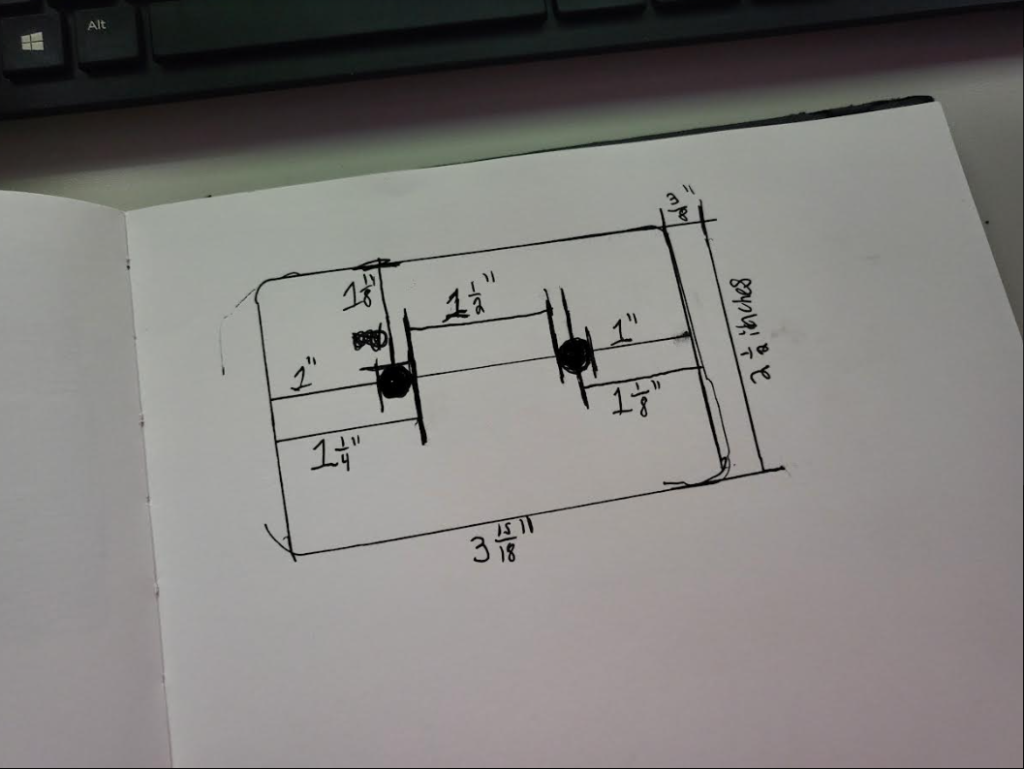
The skills I portray within this project, are skills such as knowing how to use the 3d printer (get it started it, warm it up, load the files, and print), having a better understanding of the application Cura, and being able to properly navigate and understand the application Tinkercad. The skills required to do this project are 3d modeling and designing, file transferring within Cura and out, and understanding how to use and navigate the 3d printers.
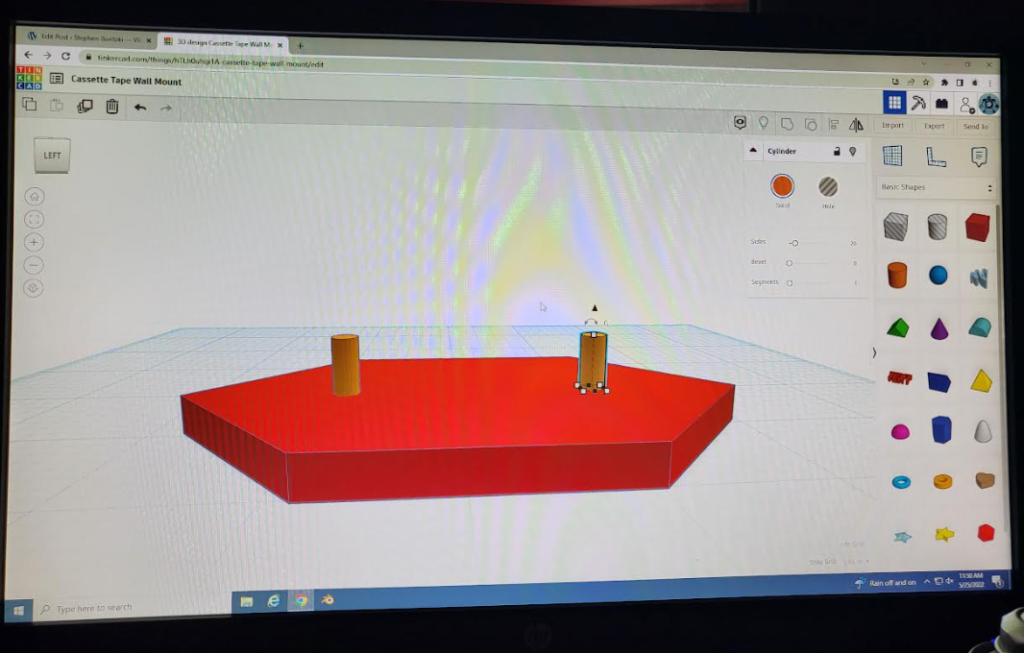
I had learned the skills I needed by spending abundant amounts of time working within these different applications. If someone wanted to learn these skills themselves, and try to attempt this project, I would recommend spending some time within Tinkercad, Cura, and in navigating the 3d printers, and to watch some tutorials on how everything works.
https://www.youtube.com/watch?v=gOs6Mdj7y_4
I would use this link, as it would guide you through how to use Tinkercad from start, and give you some very good insight on how everything works.
https://www.youtube.com/watch?v=eUNTlb5pEWA
I would use this link, as it would help you understand the application Cura, and show you important tips and give you good pointers while using the app.
The project went very well. Everything seemed to fit nicely, and minimal edits were made to create what I needed.
If I had the time, I would certainly continue this project. This exam project has been a lot of fun, and I would love to continue to create more 3d printed objects related to what I made. These would be things such as tape reels, and cassette tape holders/stands.
Write a final paragraph about your experience in Science for Inventors. What things did you enjoy about the class? If we continue to offer the class, how would it be made better? Make at least one constructive suggestion about an improvement for the class.
My experience in this Science For Inventors class, has been quite a wonderful and enjoyable one. I really enjoyed being able to have a lot of time to complete projects, and having the ability to hang, create, and design with my friends, all at the same time. If this class were continued to be offered, one suggestion I would make is to deplete the lesson plans for forcing us to learn how to write code for V.R., and to create more lesson plans for us in the certain fields we work in (fields such as 3d printing, V.R., and laser shows).
